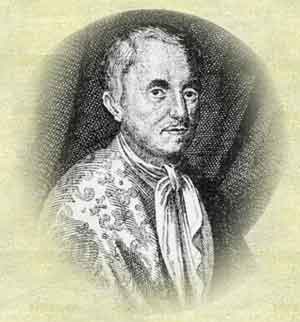

SPRING QUARTER, 2006
Department of History
University of California, Irvine
Instructor: Dr. Barbara J. Becker
|
Lecture 8. Life from Clay
|
Every legend develops a life of its own over the centuries. As it is passed down from one generation to the next, its basic elements are subtly shaped and embroidered to reflect the challenges, anxieties, strengths and aspirations of everyday people in the storytellers' world. New listeners hear it with fresh ears and begin the process of transforming it into a creature of their own time and place.
Tales of man-made golems already had a long history by the time stories crediting Rabbi Judah Loew (1513-1609) with the making of a Golem appeared in print in the 1830s. Here's what folk-tale collector, Jacob Grimm (1785-1863), had to say about golems in 1808:
The Polish Jews, after having spoken certain prayers and observed certain Feastdays, make the figure of a man out of clay or lime which, after they have pronounced the wonderworking Shem-ha-mphorasch over it, comes to life. It is true this figure cannot speak, but it can understand what one says and commands it to do to a certain extent. They call it Golem and use it as a servant to do all sorts of house-work; he may never go out alone. On his forehead the word Aemaeth (Truth; God) is written, but he increases from day to day and can easily become larger and stronger than his house-comrades, however small he may have been in the beginning. Being then afraid of him, they rub out the first letters so that nothing remains but Maeth (he is dead), whereupon he sinks together and becomes clay again. But once the owner of a Golem allowed him to grow so tall that he could not reach his forehead. Then in his fear he told this servant of his to draw off his boots, thinking that in so doing he would stoop and that then he could reach his forehead. It happened as he thought it would, and the first letter was successfully erased, but the whole load of clay fell on the Jew and crushed him to death.
|
To read more about the Golem of Prague, see Professor Kay E. Vandergrift's "Background on the Golem Legends."
To read more about German film director, Paul Wegener, and his films on the Golem, see "Paul Wegener: Man or Monster?"
![]()
In the golem stories, earth mixed with water is animated by breath and incantations. Once activated, it requires no food or water to sustain or maintain itself. Nevertheless, the golem moves and -- according to some -- even grows until it is deactivated.
Soil, water and sunshine make it possible for plants to sprout and grow. How do they do that? Which ingredients are necessary? Are some more important than others? When a plant increases in size and weight, what is the principal contributor to that weight? Are there scientific ways to find answers to these questions? What would a scientific investigation look like? How could we know if we had found The Answer?
![]()
Jan Baptist van Helmont (1577-1644)
| 1577 | born in Brussels studied at Louvain |
 |
| 1599 | received degree in medicine spent time traveling through Europe |
|
| 1605 | settled in Antwerp practiced medicine and conducted chemical experiments based on Paracelsian principles |
|
| 1648 | published Ortus medicinae coined words: |
|
described detailed "handicraft operations" -- experiments:
|
||
contemporary of:
|
||

|